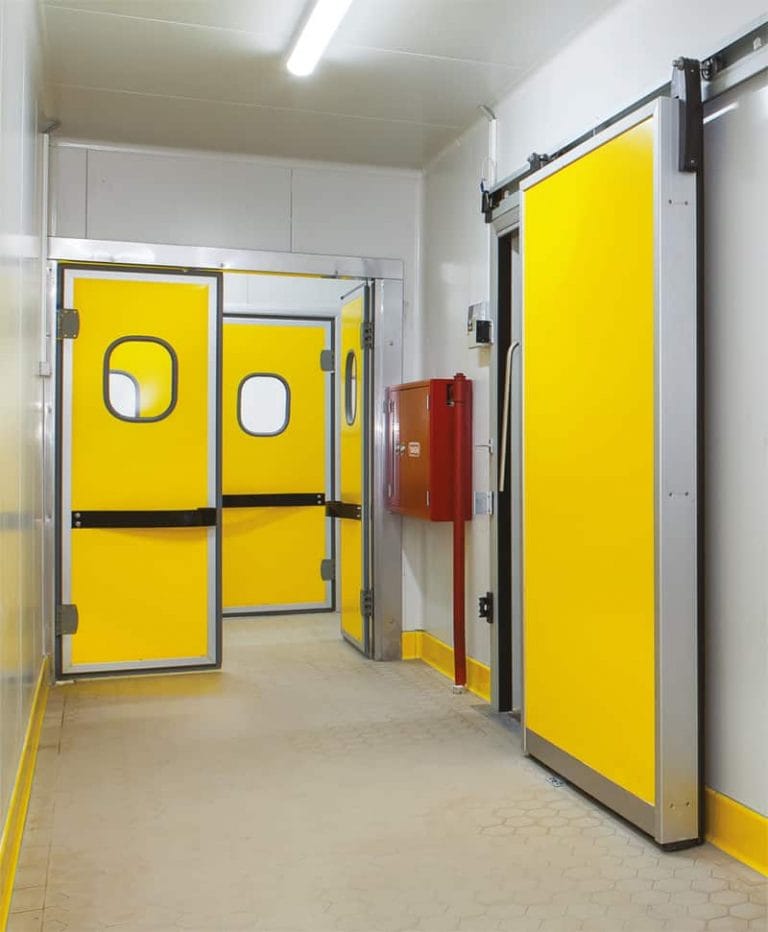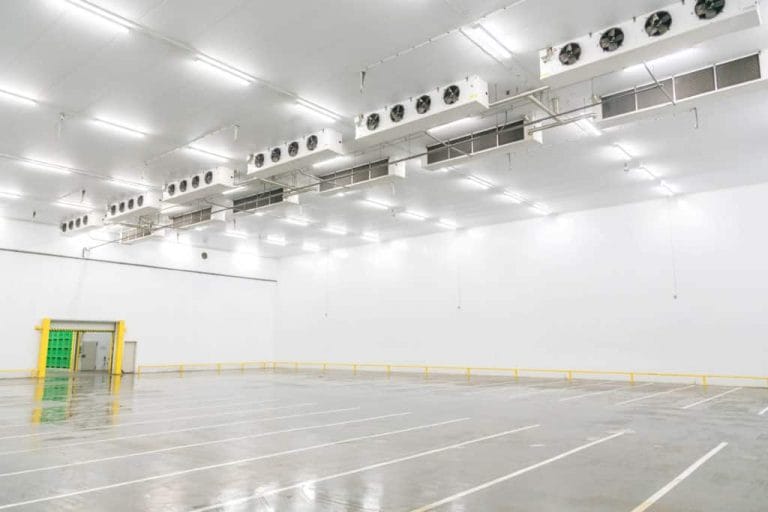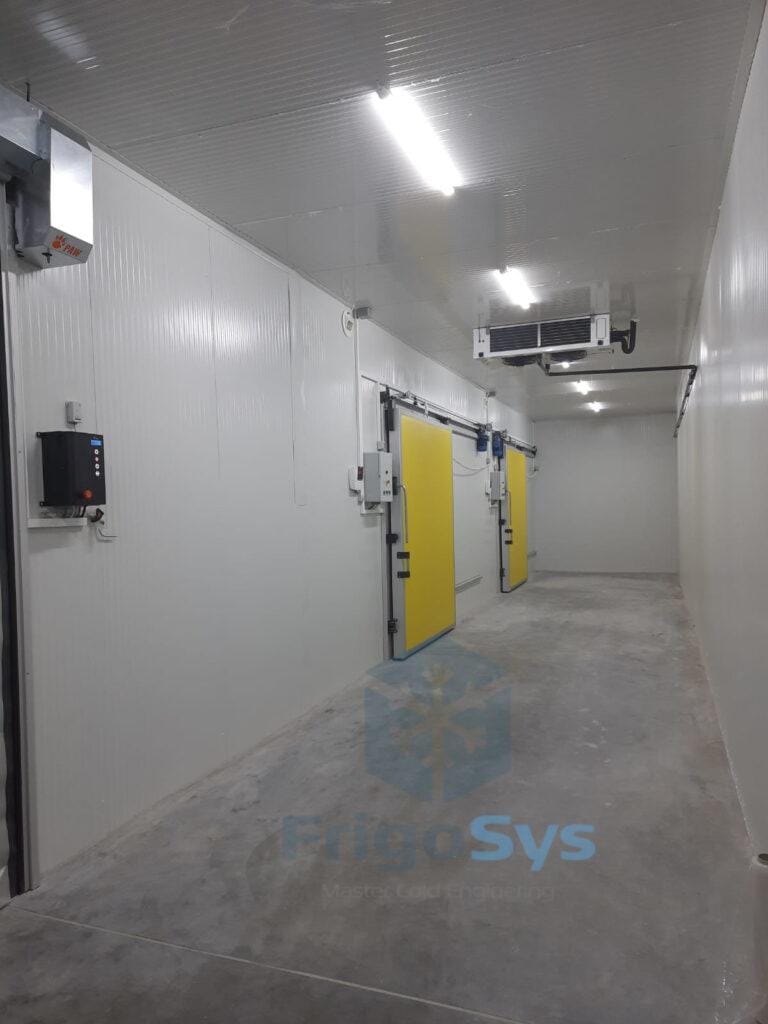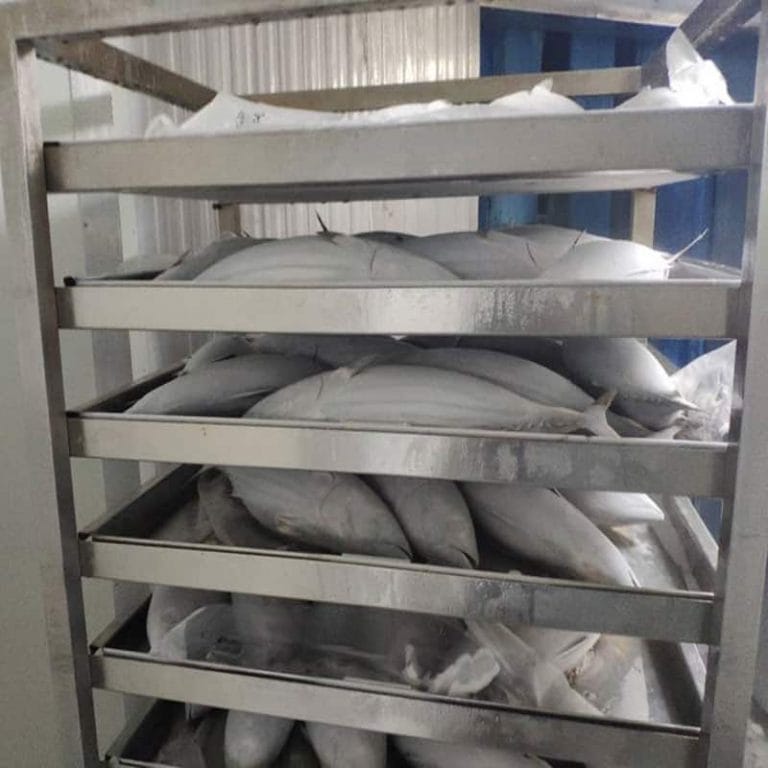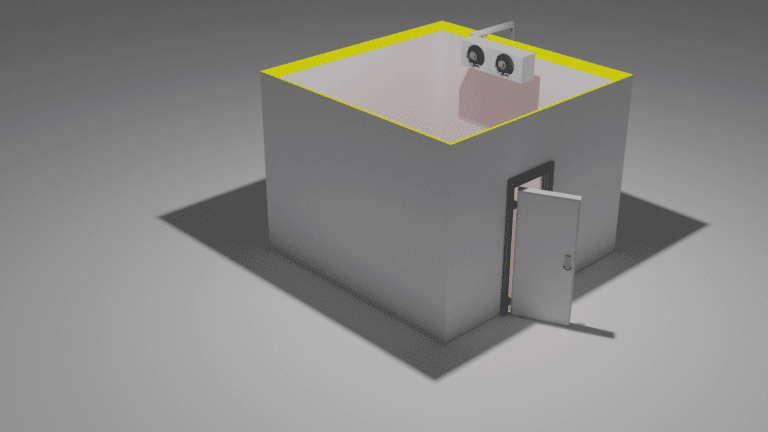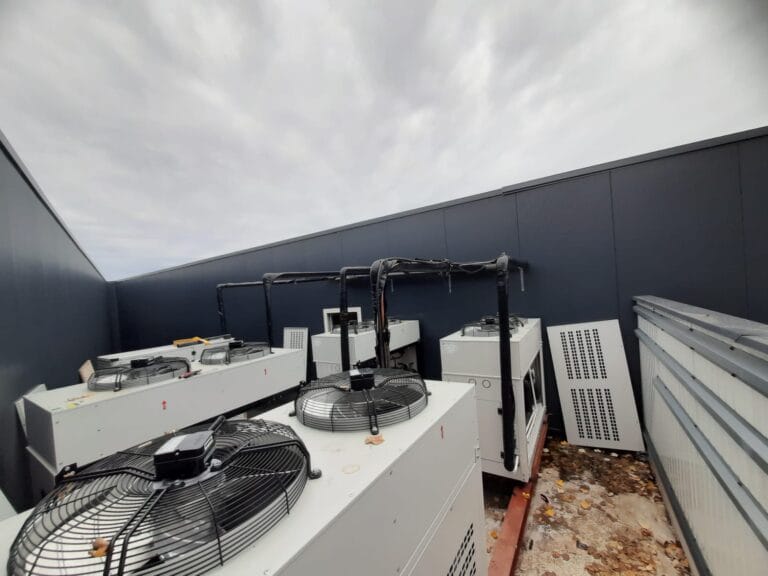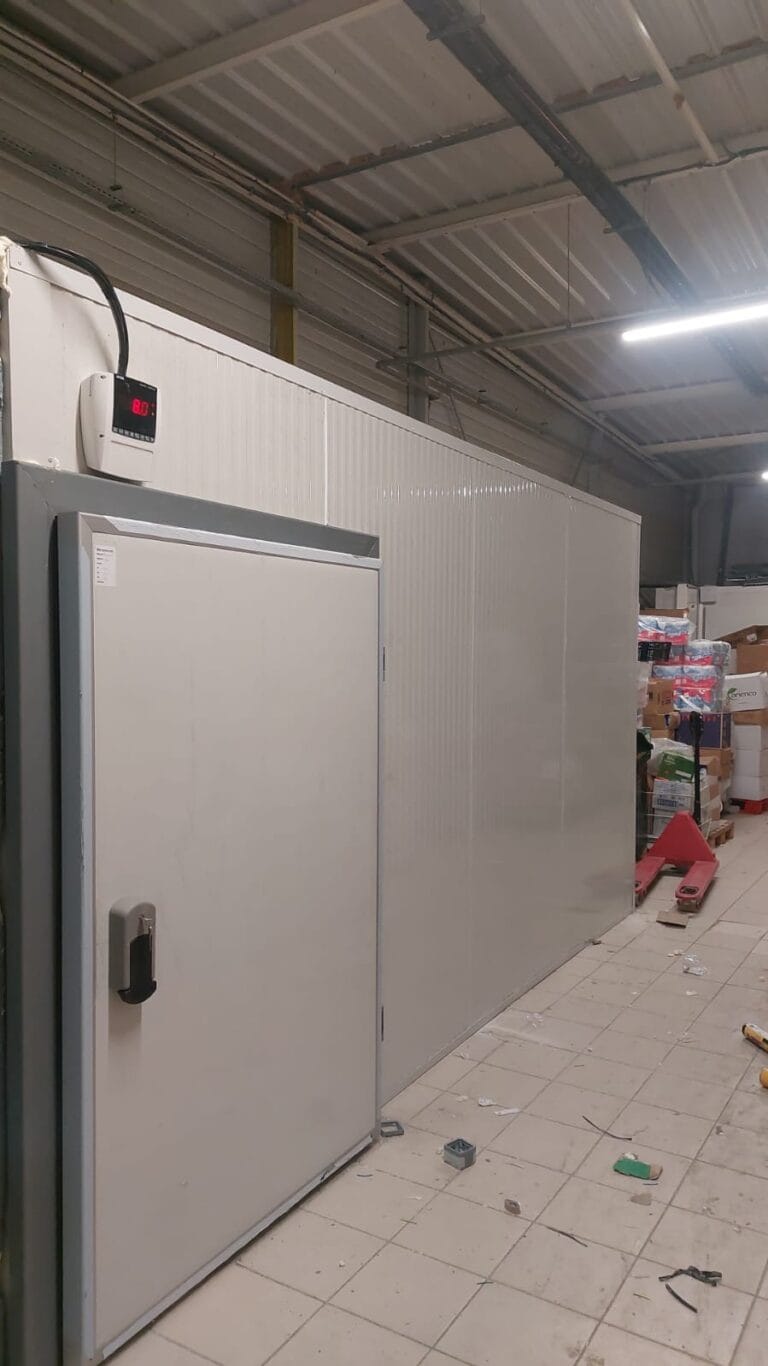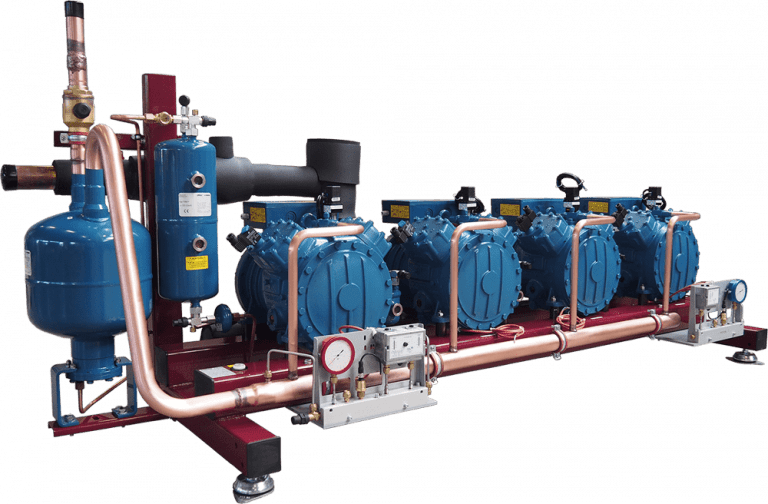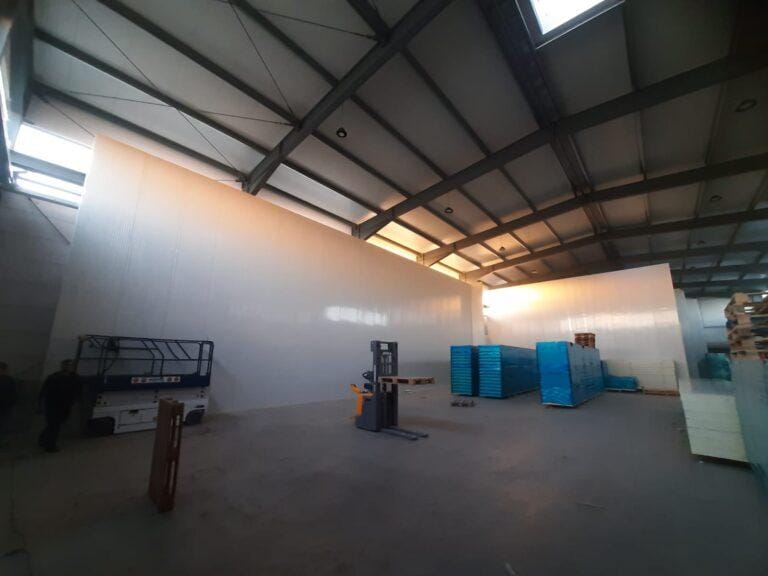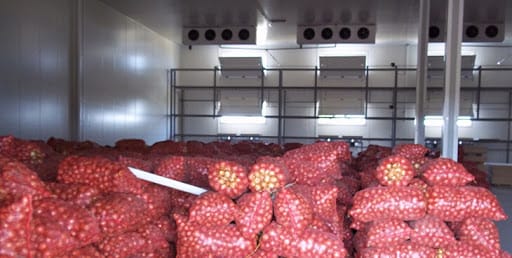Introduction to Cold Room Construction
A cold room is an insulated space designed for storing perishable goods at controlled low temperatures. Utilized predominantly in the food industry, pharmaceuticals, and other sectors requiring precise temperature control, proper construction of a cold room is crucial for maintaining energy efficiency and product quality. Several factors influence the construction process, including material selection, insulation, and refrigeration systems.
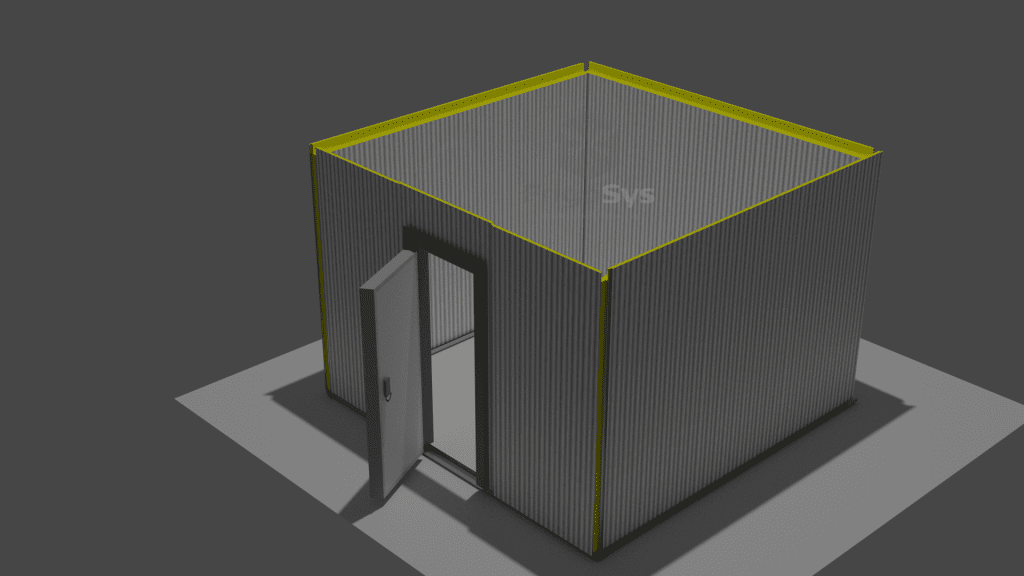
Key Components of Cold Room Construction
- Insulation Material
- Polyurethane Foam (PUF): Known for its excellent thermal insulation properties, PUF is lightweight, has a high R-value, and reduces energy costs by minimizing heat transfer.
- Polystyrene: Available in extruded (XPS) and expanded (EPS) forms. XPS has higher compressive strength, while EPS is cost-effective and provides good insulation when combined with other materials.
- Panels and Doors
- Insulated Panels: Prefabricated insulated sandwich panels are commonly used. They consist of an insulating core material (often PUF or polystyrene) sandwiched between metal or plastic sheets, ensuring structural integrity and thermal efficiency.
- Doors: Cold room doors must balance accessibility and insulation. To prevent air leakage, hinged and sliding doors with robust sealing gaskets are preferred.
- Refrigeration Systems
- Compressors: Vital for maintaining low temperatures, compressors should be energy-efficient and appropriately sized for the room’s volume.
- Evaporators and Condensers: These components help manage temperature consistency. High-efficiency evaporators and condensers with low energy consumption are essential.
- Defrosting Mechanisms: Regular defrosting prevents ice build-up and ensures the refrigeration system operates efficiently. Options include electric, hot gas, and water defrost systems.
- Flooring and Ventilation
- Insulated Flooring: Floors must prevent thermal bridging and withstand heavy loads. Materials like concrete with insulating layers or insulated floor panels are common.
- Vapour Barriers and Ventilation: Essential for preventing moisture infiltration and condensation, vapour barriers should be installed correctly. Proper ventilation is also crucial to manage air quality and humidity levels within the cold room.
Investing in these key components and materials can significantly enhance the energy efficiency and longevity of a cold room, ensuring it meets industry standards and operational requirements.
Importance of Energy-Efficiency in Cold Rooms
Energy efficiency in cold rooms is a critical aspect that impacts both operational costs and environmental sustainability. Cold rooms are essential for various industries, including food storage, pharmaceuticals, and biotechnology, where maintaining precise temperature control is crucial. Several factors highlight the importance of energy-efficient cold rooms:
- Cost Savings: Energy-efficient cold rooms reduce electricity consumption, translating directly to lower utility bills. This saving is significant over time, especially in facilities requiring constant temperature maintenance.
- Environmental Impact: Using less energy reduces greenhouse gas emissions, contributing to the mitigation of climate change. Industries adopting energy-efficient practices can promote themselves as environmentally responsible entities.
- Regulatory Compliance: Many regions have stringent regulations concerning energy usage and efficiency standards. Adhering to these can prevent potential legal issues and fines, ensuring that businesses remain compliant with local and international standards.
- Operational Reliability: Efficient cold rooms often incorporate advanced technology and high-quality materials, leading to more reliable operation. This reliability minimises the risk of temperature fluctuations that can compromise stored products’ safety and quality.
- Longevity of Equipment: Energy-efficient systems typically use components that operate under less strain, extending the lifespan of the equipment. This reduces the frequency and cost of maintenance and replacements, fostering a longer-lasting, more sustainable operation.
- Product Quality: Maintaining consistent temperatures is crucial for product preservation, especially for perishable goods. Energy-efficient cold rooms provide stable environments that help maintain the quality and safety of stored items, reducing waste and ensuring consumer safety.
In summary, the importance of energy-efficiency in cold rooms cannot be overstated. The advantages span economic, environmental, and operational dimensions, making energy-efficient practices an essential consideration for modern cold room operations. Every step taken towards improving energy efficiency contributes to a more sustainable and cost-effective business model.
Characteristics of Ideal Materials for Cold Room Construction
Choosing the right materials for cold room construction is critical to maintaining energy efficiency and ensuring optimal performance. The following are key characteristics to consider when selecting materials:
- Thermal Insulation:
- Materials with high thermal resistance (R-value) are paramount. They help in minimising heat transfer and maintaining the desired temperature consistently.
- Commonly used insulating materials include polyurethane foam, polystyrene, and expanded polystyrene (EPS). These substances provide excellent thermal insulation properties.
- Durability and Strength:
- Durability is essential to withstand harsh conditions and mechanical impacts. Materials must be resistant to wear and tear.
- Steel panels, often galvanised or stainless steel, are frequently used because of their durability and strength. These materials are also corrosion-resistant.
- Moisture and Vapour Barrier:
- Effective moisture control is crucial to prevent condensation, which can lead to mould growth and structural damage.
- Vapour barrier materials, such as polyethylene sheets, are often integrated with insulation to prevent moisture penetration.
- Ease of Cleaning and Hygiene:
- Cold room materials must support easy cleaning and sanitisation to comply with health and safety standards.
- Smooth surfaces, like those provided by certain composites and high-quality metals, are preferable for reducing bacterial build-up.
- Air Tightness:
- Minimising air infiltration is vital to energy efficiency. Materials should enable the construction of air-tight seals around doors, windows, and joints.
- Silicone sealants and EPDM rubber gaskets are typically used to ensure excellent air tightness.
- Fire Resistance:
- Fire-resistant materials are critical for safety. Materials should ideally have a fire retardancy rating to safeguard against potential fires.
- Rock wool and fibreglass are often used because of their fire resistance properties.
- Environmental Impact:
- Sustainability is increasingly important. Choosing materials that are environmentally friendly and have minimal ecological footprints can be advantageous.
- Recyclable materials and those with low environmental impact during their lifecycle should be preferred, such as certain types of insulation that are non-toxic and recyclable.
- Cost-Effectiveness:
- Balance between cost and performance is essential. While upfront costs are a consideration, long-term savings due to energy efficiency and reduced maintenance should be factored in.
- Materials like polyurethane foam, although slightly more expensive initially, provide substantial savings over time due to their superior insulating properties.
By considering these characteristics, one can ensure that the materials chosen will enhance the energy efficiency, durability, and overall performance of the cold room, while also meeting safety and environmental standards.
High-Performance Cold Room Construction Panels for Walls and Ceilings
Selecting high-performance cold room panels for walls and ceilings is crucial in designing energy-efficient cold rooms. These panels provide excellent thermal insulation, structural stability, and durability, ensuring that the cold room maintains a consistent temperature while reducing energy consumption.
Types of High-Performance Panels
- Polyurethane (PUR) Cold Room Panels:
- Offer high insulation values with low thermal conductivity.
- Lightweight and easy to install.
- Resistant to moisture and chemicals, suitable for humid environments.
- Polyisocyanurate (PIR) Panels:
- Enhanced fire resistance compared to PUR panels.
- Superior thermal performance, providing greater energy efficiency.
- Durable and long-lasting, reducing maintenance costs.

Cold Room Panels
Benefits of Using High-Performance Panels for Cold Room Construction
High-performance panels offer several advantages for cold room construction:
- Energy Efficiency:
These panels reduce energy consumption by maintaining consistent internal temperatures, leading to lower operating costs.
- Improved Temperature Control:
High-performance panels provide superior insulation, helping to prevent temperature fluctuations and ensuring optimal storage conditions.
- Structural Integrity:
- Panels contribute to the overall stability and strength of the cold room, helping to withstand external pressures and impacts.
- Hygienic and Easy to Clean:
- Many panels feature surfaces that are resistant to bacterial growth and are easy to clean, maintaining sanitary conditions.
Considerations for Panel Selection for Cold Room Construction
When choosing high-performance panels for cold rooms, it is essential to consider:
- Thermal Conductivity:
- Panels with low thermal conductivity ensure effective insulation.
- Fire Resistance:
- Fire-resistant panels enhance safety and compliance with local building codes.
- Moisture Resistance:
- Panels should resist moisture to maintain insulation properties and prevent damage.
- Ease of Installation:
- Opt for easy installation panels, reducing construction time and labor costs.
In conclusion, high-performance panels for walls and ceilings are pivotal in constructing energy-efficient cold rooms. By choosing the right type of panel based on specific requirements, energy efficiency, and operational costs can be significantly improved.
Energy-Efficient Flooring Solutions
Energy-efficient flooring solutions play a critical role in enhancing the thermal insulation and overall energy performance of cold rooms. Incorporating the right flooring material can significantly reduce energy consumption and ensure durable and sustainable cold storage.
Types of Energy-Efficient Flooring
- Insulated Concrete Floor Panels:
- Insulated concrete floor panels offer a robust and energy-efficient solution. These panels combine structural integrity with high levels of thermal resistance.
- The insulation layer reduces heat transfer, ensuring minimal energy loss.
- Ideal for heavy-duty cold rooms where durability and strength are essential.
- Polyurethane Foam Floors:
- Polyurethane foam floors provide excellent thermal insulation, high compressive strength, and durability.
- The closed-cell structure of polyurethane foam minimizes heat conduction, making it an efficient insulator.
- Easy to install and can be used in various configurations to meet specific thermal requirements.
Advanced Door Technologies for Temperature Control
Selecting the right door technologies is crucial for maintaining temperature control in cold room construction. Advanced door systems not only enhance energy efficiency but also provide durability and ease of use.
Types of Cold Room Doors
- Hinged Doors
Hinged Cold room doors are commonly used in smaller cold rooms. They offer ease of access while providing a tight seal to prevent temperature loss. - Sliding Doors
Ideal for larger cold rooms, sliding doors save space and minimize the risk of trapping users. They can be manual or automatic, providing flexibility in operational settings. - Rapid Roll-Up Doors
Rapid roll-up doors are designed for high-traffic areas. They open and close quickly, limiting the escape of cold air and maintaining internal temperatures effectively.
Cold Room Doors
Key Features of Advanced Doors
- Insulation Efficiency
Advanced doors often feature high-quality insulation materials such as polyurethane foam or extruded polystyrene. This ensures minimal thermal conductivity and enhances energy efficiency. - Sealing Mechanisms
High-performance gaskets and sealing strips are essential. They prevent air leakage and maintain the cold room’s temperature. Magnetic door gaskets and inflatable seals are popular for their superior insulating properties. - Automatic Operation
Automation options include sensor-activated doors, remote controls, and programmable settings. These features reduce manual handling, enhance security, and optimise energy conservation. - Durability and Hygiene
Materials like stainless steel, aluminium, and PVC-coated panels offer resistance to corrosion, moisture, and contaminants. This ensures longevity and hygiene in food storage environments. - Safety Features
Safety mechanisms, such as emergency release systems and anti-pinch sensors, are crucial. They protect users from accidents and ensure smooth, safe operation.
Considerations for Selection
When choosing door technologies, consider:
- Usage Frequency
The frequency of door usage affects the type of door and automation level required. High-frequency areas benefit from rapid roll-up doors, while low-frequency areas may use hinged doors. - Temperature Requirements
Different cold rooms may have varied temperature needs. Ensure doors are capable of maintaining the specific temperature range. - Space Constraints
Evaluate the available space for door operation. Sliding doors are suitable where space is limited, while hinged doors require more room to open fully. - Compliance with Regulations
Ensure the doors comply with industry standards for insulation, safety, and hygiene. Proper certification can prevent regulatory issues and enhance operational efficiency.
Incorporating advanced door technologies significantly contributes to the overall energy efficiency and functionality of cold rooms.
Vapor Barriers for Cold Room Construction
Vapor barriers are an essential component in constructing energy-efficient cold rooms. They prevent moisture from penetrating the insulation, thus maintaining optimal temperature and reducing energy consumption. Various materials can serve as vapor barriers, each suited for specific applications.
Types of Vapour Barrier Materials
- Polyethylene Sheets:
- These are available in different thicknesses, commonly 6 mil and 10 mil.
- Easy to install and cost-effective.
- Suitable for use on both walls and ceilings.
- Aluminium Foils:
- Provide excellent moisture resistance.
- High durability and robust against punctures.
- Ideal for high-humidity environments as they also reflect radiant heat.
- Spray Foams:
- Offer both insulation and vapour barrier properties.
- Expand to fill gaps and cracks, ensuring a seamless barrier.
- Appropriate for complex geometries and hard-to-reach areas.
- Rubber Membranes:
- Highly elastic and can accommodate structural movements.
- Resistant to mould and mildew.
- Often employed in conjunction with other insulation materials for enhanced effectiveness.
Selecting the Right Refrigeration Systems for Cold Room Construction
Choosing an energy-efficient refrigeration system is crucial for maintaining a cold room’s optimal temperature and reducing energy consumption. The right refrigeration system can significantly impact both energy efficiency and operational costs. Here are essential considerations when selecting refrigeration systems for an energy-efficient cold room construction:
Key Factors to Consider:
- Size and Capacity Requirements:
- Determine the cold room’s size and the required cooling capacity. An undersized system may struggle to maintain the desired temperature, while an oversized system may lead to unnecessary energy consumption.
- Refrigerant Type:
- Use environmentally friendly refrigerants with low Global Warming Potential (GWP) and Ozone Depletion Potential (ODP). Natural refrigerants like ammonia (NH3) and carbon dioxide (CO2) are excellent choices due to their minimal environmental impact.
- Energy Efficiency Rating:
- Check the Energy Efficiency Ratio (EER) and Seasonal Energy Efficiency Ratio (SEER) ratings. Higher ratings indicate more efficient systems, which can result in substantial energy savings over time.
- Compressor Technology:
- Adopt advanced compressor technologies like variable speed or parallel compressors. These systems adjust their output based on cooling demands, thereby reducing energy usage during lower demand periods.
- Defrosting Method:
- Choose efficient defrosting methods such as hot gas defrost, which uses the system’s waste heat. This method promotes energy conservation and minimizes temperature fluctuations within the cold room.
- Insulation Integration:
- Ensure the refrigeration system is compatible with high-quality insulation materials like polyurethane foam or polystyrene. Proper insulation supports the refrigeration system by reducing heat ingress and maintaining internal temperatures.
- Control Systems:
- Implement advanced control systems that monitor and regulate temperature, humidity, and energy consumption. Modern control systems can optimize performance and alert operators to potential issues, ensuring efficient operation.
Benefits of the Right Refrigeration System:
- Cost Efficiency:
- Reduced energy consumption leads to lower electricity bills, making the overall operation more cost-effective.
- Environmental Impact:
- Energy-efficient systems help reduce carbon footprint, contributing to a more sustainable and environmentally friendly operation.
- Product Quality:
- Consistent temperature management ensures the preservation of perishable goods, maintaining their quality and shelf life.
Proper selection, installation, and maintenance of refrigeration systems are integral to achieving energy efficiency in cold room construction. Careful consideration of the above factors helps in creating an energy-efficient and reliable refrigeration solution.
Eco-Friendly Cooling Technologies
Innovative technologies are transforming cold room construction into a more sustainable practice. Such advancements not only reduce environmental impact but also deliver significant energy savings.
Natural Refrigerants
- Hydrocarbons (HCs): Propane (R-290) and Isobutane (R-600a) are effective and low global warming potential (GWP) options.
- Ammonia (R-717): Extremely energy-efficient and has a zero GWP but requires careful handling due to its toxicity.
- Carbon Dioxide (R-744): An efficient option with a naturally low GWP, providing a sustainable alternative to other synthetic refrigerants.
Energy Management Systems
Energy management systems monitor and control energy usage in real-time. Implementing such systems can optimise cooling processes, reduce wastage, and enhance overall efficiency.
- Smart Thermostats: Automatically adjust temperature settings based on usage patterns, reducing unnecessary energy consumption.
- Monitoring Software: Provides data analytics for energy use, allowing for predictive maintenance and operational adjustments.
- IoT-Enabled Devices: Internet of Things (IoT) integrates devices for seamless control over various cooling components, further enhancing energy efficiency.
Insulation Technologies
Effective insulation materials can significantly reduce heat transfer, maintaining the desired temperature with less energy.
- Aerogel Insulation: Known for its incredible thermal resistance, aerogel can drastically cut down energy expenditure.
- Vacuum Insulation Panels (VIPs): Offer superior thermal resistance in a thinner profile, thereby saving space and improving energy efficiency.
- Phase Change Materials (PCMs): Absorb and release heat during phase transitions to maintain a stable temperature without excessive energy use.
Advanced Cooling Techniques
Implementing forward-thinking techniques can further enhance eco-friendly approaches to cooling.
- Evaporative Cooling: Utilises the principles of evaporation to cool air naturally, reducing refrigeration load.
- Geothermal Cooling: Leverages the stable temperatures of the earth to assist in cooling, requiring less energy for temperature regulation.
- Solar-Assisted Cooling: Integrates solar power to drive cooling systems, substantially lowering conventional energy demand.
Integration of Renewable Energy
Leveraging renewable energy sources mitigates the reliance on non-renewable energy. This incorporation can accelerate the shift towards more sustainable cold room operations.
- Solar Panels: Utilize photovoltaic panels to generate electricity from sunlight, which can be used to power cooling systems.
- Wind Turbines: Harvest wind energy to provide supplemental or primary power for cold rooms situated in optimal locations.
By adopting these eco-friendly cooling technologies, businesses can ensure their cold storage solutions are not only efficient but also environmentally responsible.
Future Trends in Cold Room Construction Materials
Innovations in materials used for cold room construction are crucial for improving energy efficiency, sustainability, and performance. A few significant trends are emerging in the industry.
- Advanced Insulation Materials: New insulation materials, such as aerogels and vacuum-insulated panels, are becoming increasingly popular. These materials offer higher thermal resistance, significantly reducing energy consumption. Aerogels, known for their lightweight and excellent insulating properties, are especially promising due to their ability to maintain temperature stability.
- Phase Change Materials (PCMs): PCMs absorb and release thermal energy during the process of melting and freezing. Integrating PCMs into cold room construction can help maintain temperatures without constant energy input. By stabilizing internal temperatures, PCMs reduce the workload on cooling systems, leading to energy savings.
- Sustainable Building Materials: There is a growing emphasis on using environmentally friendly construction materials such as recycled steel, engineered wood, and green concrete. These materials have a lower environmental impact and can contribute to overall sustainability goals. Additionally, some organic-based insulation materials, like sheep wool and cellulose, offer eco-friendly alternatives with good thermal properties.
- Smart Materials and Technologies: The integration of IoT and smart materials is transforming the cold room industry. Smart sensors and adaptive materials can adjust insulation properties based on real-time conditions, enhancing energy efficiency and operational performance. The use of nanomaterials to improve the durability and thermal performance of existing materials is also being researched and developed.
- Lightweight and Strong Composites: The development of advanced composite materials offers a balance of strength and light weight, providing structural durability while reducing construction costs. These composites, such as fiberglass reinforced panels, improve energy efficiency by offering superior insulation and reducing thermal bridging.
Research and development in these areas promise substantial progress and innovation in cold room construction. By keeping an eye on these trends, the industry can anticipate better performance and enhanced sustainability in future projects.
Conclusion and Best Practices for Cold Room Construction
Constructing an energy-efficient cold room requires selecting the appropriate materials that offer superior insulation, thermal resistance, and durability. Adopting best practices in material selection and construction processes can significantly enhance energy efficiency.
- Insulation Materials:
- Polyurethane foam and polystyrene foam are recommended for superior insulation.
- Consider vacuum-insulated panels for maximum thermal resistance.
- Use reflective barriers to deflect radiant heat.
- Structural Materials:
- Choose materials like insulated metal panels or composite panels for their high thermal resistance and strength.
- Stainless steel can be used for its durability and resistance to corrosion.
- Sealing and Vapour Barriers:
- Ensure all seams and joints are properly sealed to prevent air leaks.
- Use vapour barriers to minimise moisture infiltration and condensation.
- Doors and Windows:
- Install energy-efficient doors with proper sealing to maintain consistent internal temperatures.
- Use double or triple glazed windows with low-emissivity coatings to reduce heat transfer.
- Flooring:
- Opt for insulated flooring options that reduce thermal bridging.
- Use materials like concrete with insulation layers to minimise heat loss.
- Ventilation:
- Implement effective ventilation systems to ensure air circulation and reduce humidity.
- Use energy-efficient fans and ducts with high insulation properties.
- Energy-Efficient Lighting:
- Install LED lighting which consumes less energy and generates minimal heat.
- Use motion sensors to control lighting and reduce energy consumption.
- Regular Maintenance:
- Schedule regular inspections to check for gaps, leaks, and structural integrity.
- Conduct routine maintenance on cooling systems and insulation materials.
Implementing these best practices can lead to significant energy savings, reduced operational costs, and extended lifespan of cold room facilities. Proper material selection and construction techniques are crucial for achieving the highest levels of energy efficiency and operational performance.


